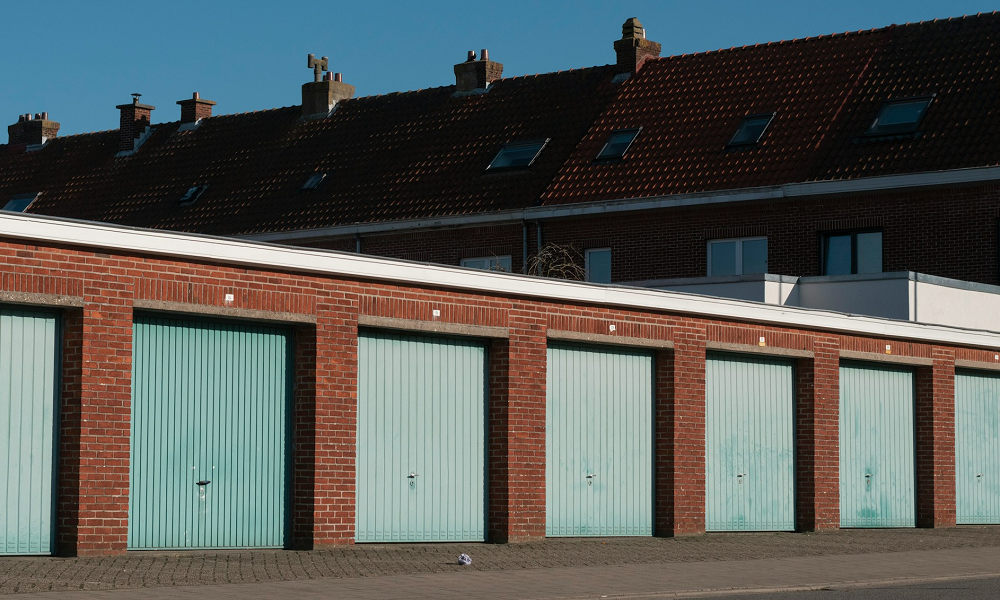Reviews
Rising Interest in Multi-Bay Garages: A Growing Niche for Real Estate Investors

Garages for sale don’t usually grab headlines in real estate circles, but let me be straight with you. Most real estate investors walk right past multi-bay garages without a second thought. They see concrete, steel doors, and think “boring.” Meanwhile, I’m over here watching these same investors chase overpriced residential rentals while missing out on properties that could double their returns.
Last month alone, I closed three garage deals for clients. Each one is pulling in more monthly cash flow than comparable residential properties in their areas. The commercial storage market? It exploded. We’re talking 15% growth over five years, and most people still don’t get it.
What is a Multi-Bay Garage?
Forget everything you think you know about garages. Your two-car garage at home stores Christmas decorations and that exercise bike you never use. Multi-bay garages are completely different animals.
Picture this: 8-12 individual garage bays, each one 12×30 feet or bigger, designed for businesses. Not homeowners – businesses. The contractor down the street needs somewhere to park his trucks and store equipment. The local e-commerce seller needs warehouse space but can’t afford 50,000 square feet. That’s your tenant base.
I’ve got one property in Ohio where Bay 1 stores landscaping equipment, Bay 2 houses a woodworking shop, and Bay 3 is full of restaurant supplies. Three different businesses, three rent checks, one property. That’s the beauty of it.
Why Investors Are Taking Notice in Multi-Bay Garages
Here’s what nobody tells you about residential rentals: they’re maintenance nightmares. Last year, one of my residential properties needed a new HVAC system ($8,000), kitchen appliances died ($3,500), and don’t get me started on the landscaping costs.
Garages? The tenant’s truck won’t start – not my problem. Their inventory gets dusty – not my problem. The garage door needs adjustment twice a year – that’s literally it for maintenance most months.
My best garage property cost $120,000 and brings in $2,400 monthly. After expenses, that’s roughly 18% annual return. Show me a single-family rental doing that without major renovations.
The entry barrier is lower too. While everyone’s bidding up $400,000 houses, you can grab a solid garage property for $150,000 or less in most markets. Less competition means better deals.
Key Factors to Consider
Location makes or breaks these deals. Period. I learned this the hard way on my second garage purchase – bought in the middle of nowhere because the price looked amazing. Took eight months to fill half the bays.
Now I stick to areas with actual businesses nearby. Industrial parks, commercial districts, anywhere contractors and small manufacturers operate daily. These guys need storage close to their work areas.
Zoning nearly killed one deal for me. Found this perfect 10-bay garage, price was right, condition was great. Three weeks into due diligence, I discover the city rezoned the area residential-only two years earlier. Current owner grandfathered in, but any new use required residential conversion. Walk away money, right there.
Always – and I mean always – verify what you can legally do with the property before you make an offer. City planning departments have this information. Use them.
Check out your competition while you’re at it. If there are five similar facilities within two miles, all half-empty, maybe look elsewhere. But if you’re the only game in town? Price accordingly.
Strategies to Improve Returns
Active management separates winners from losers in this business. I visit my properties monthly, minimum. Not because I don’t trust my tenants, but because small problems become expensive problems when ignored.
Pricing is an art form. I track what everyone else charges quarterly and adjust accordingly. Market rate in January might be different by March. Stay flexible.
Value-adds are where you make real money. Basic garage rental in my area goes for $200 monthly. Add electricity and lighting? $275. Throw in a small office space? $350. Install security cameras and 24/7 access? $400+.
One property, I installed a small bathroom and coffee station. Tenants love it, especially contractors who spend full days working out of their bays. That $5,000 investment lets me charge $75 more per bay monthly.
Common Risks and How to Mitigate Them
Empty bays kill your returns fast. I maintain waiting lists for all my properties now. When someone gives notice, I’ve got three people ready to look at the space immediately.
Tenant screening matters more than you’d think. I’ve had guys try to run auto repair shops, store hazardous chemicals, even sublease space to other businesses. Clear lease agreements prevent most problems, but you still need to pay attention.
Insurance is non-negotiable. I carry comprehensive coverage on every property. Last year, a tenant’s forklift punched through a wall. Insurance covered repairs, business interruption, and my legal costs when the neighboring tenant complained about dust.
Weather can be brutal. Roof leaks, flooding, ice damage – it happens. Build maintenance reserves and address problems immediately. A $500 roof repair becomes a $5,000 structural issue if you wait.
Financing Options for Multi-Bay Garages
Commercial loans work best for most deals. Banks understand the business model, rates are reasonable, and terms can stretch to 25 years. You’ll need 20-25% down and decent credit, but the process is straightforward.
SBA loans take longer but offer better terms for smaller properties. I used an SBA 7(a) loan for my first garage purchase – 10% down instead of 25%, government backing that made the bank more comfortable. Worth the extra paperwork if you qualify.
Private money costs more upfront but moves faster. I’ve closed deals in 10 days using private lenders when properties required quick action. Interest rates run 2-3% higher than banks, but speed sometimes trumps cost.
Local credit unions often have the best rates and most flexible terms. They understand local markets better than big banks and can structure deals that work for everyone.
Case Studies: Successful Multi-Bay Garage Investments
Real numbers from real deals:
My client Jim bought an 8-bay garage in Akron for $85,000. Needed $20,000 in basic improvements – new doors, LED lighting, concrete repair. Six months later, all bays rented at $250 each. Monthly gross: $2,000. After expenses, he nets about $1,650 monthly on a $105,000 investment.
Outside Birmingham, Sarah and her partner grabbed a larger facility for $180,000. They converted it to climate-controlled vehicle storage, targeting classic car owners and seasonal vehicle storage. Premium pricing at $150-300 per space, depending on size. Year two, they’re generating $4,200 monthly and have a waiting list.
In Phoenix, Mike saw delivery drivers struggling to find secure parking. He bought a garage, installed electrical outlets and security cameras, created spaces specifically for delivery vehicles and equipment. Charges $400 monthly per space and stays full constantly.
Expert Insights
Fifteen years in commercial real estate taught me that the best opportunities hide in boring places. Everyone chases flashy retail centers and office buildings. Meanwhile, these concrete boxes generate steady returns year after year.
The secret is treating your garage facility like any other business. Know your customers, understand their needs, and deliver reliable service. Do that consistently, and you’ll have tenants who stay for years.
Market timing matters less with garages than other commercial properties. Small businesses always need affordable storage and workspace. Economic downturns might actually increase demand as companies look to cut overhead costs.
Conclusion
Multi-bay garages won’t make you rich overnight, but they’ll generate steady income for years. Lower maintenance, predictable cash flow, and reasonable entry costs make them perfect for building long-term wealth.
The market opportunity is real and growing. While everyone else chases residential rentals and retail properties, smart investors are quietly building garage portfolios that outperform traditional real estate investments.
Want to get started? Drive around your area’s commercial districts. Look for existing garage facilities, check occupancy rates, and talk to local contractors about their storage needs. The opportunities are there if you know where to look.

-

 World1 week ago
World1 week agoEthiopian volcano erupts for first time in thousands of years
-

 Health2 days ago
Health2 days ago8 kittens die of H5N1 bird flu in the Netherlands
-

 Legal7 days ago
Legal7 days agoUtah Amber Alert: Jessika Francisco abducted by sex offender in Ogden
-

 US News6 days ago
US News6 days agoExplosion destroys home in Oakland, Maine; at least 1 injured
-

 Health7 days ago
Health7 days agoMexico’s September human bird flu case confirmed as H5N2
-

 Legal3 days ago
Legal3 days ago15 people shot, 4 killed, at birthday party in Stockton, California
-

 World7 days ago
World7 days agoWoman killed, man seriously injured in shark attack on Australia’s NSW coast
-

 Health6 days ago
Health6 days agoMarburg outbreak in Ethiopia rises to 12 cases and 8 deaths




